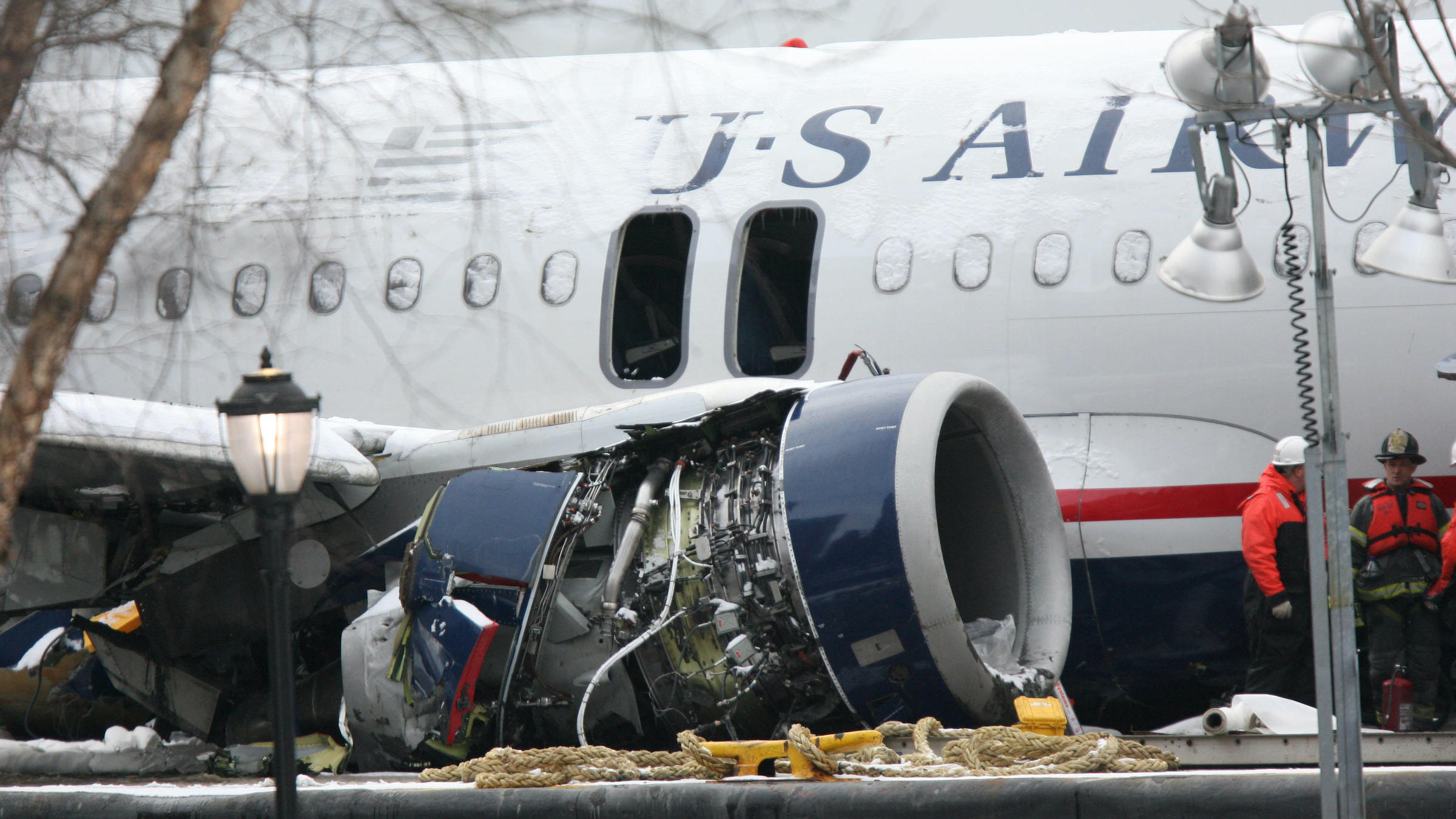What happens when a plane makes an emergency landing?
And how likely is it that, in such an event, you'd die?

Imagine flying on an airplane when it becomes clear that something isn't quite right. Perhaps the plane lurches, or maybe you start smelling smoke. The captain comes on the public address system to announce that the plane is making an emergency landing.
What happens next? What options do pilots have, and what procedures must they follow when making an emergency landing? And what might prompt a pilot to make this call? According to Capt. Jack Netskar, president of the International Federation of Air Line Pilots' Associations, there are a number of circumstances that can necessitate an emergency landing.
These include "a not fully operative aircraft, fuel starvation, when the successful outcome of the landing at the intended destination is questionable, technical malfunctions and permanent crew impairment," Netskar told Live Science in an email.
Related: Can airplanes fly into outer space?
Although there is no strict definition of what constitutes an emergency landing, there are three distinct types, Netskar said.
The first is a forced landing, which Netskar described as "an immediate landing, on or off an airport, necessitated by the inability to continue further flight. A typical example is an airplane forced down by engine failure."
The second is a precautionary landing, which, Netskar said, is "a premeditated landing, on or off an airport, when further flight is possible but inadvisable. Examples of conditions that may call for a precautionary landing include deteriorating weather, being lost, fuel shortage and gradually developing engine trouble."
Get the world’s most fascinating discoveries delivered straight to your inbox.
The third, known as ditching, is the least common, and involves "a forced or precautionary landing on water." One of the most famous examples of this type of landing was the so-called Miracle on the Hudson in 2009, when US Airways Flight 1549 hit a flock of geese and was forced to land on the Hudson River. One hundred of the 155 people on board recorded injuries, five of them serious, but there were no fatalities — an outcome largely attributed to the quick thinking of Capt. Chesley "Sully" Sullenberger and the plane's crew. The incident was adapted for the big screen in the 2016 film "Sully," which starred Tom Hanks as the eponymous captain.
The three types of emergency landing have very different fatality rates, according to the Aircraft Owners and Pilots Association (AOPA), a Maryland-based nonprofit that advocates for aviation safety. Precautionary landings have a fatality rate of 0.06%, while forced landings and ditching have much higher fatality rates of around 10% and 20%, respectively, according to the AOPA.
To prepare for — and ultimately carry out — an emergency landing, pilots must go through a number of steps. These include preparing the cabin and sending a request to the emergency service, as well as reviewing all evacuation procedures and having a plan of action, Netskar said.
For instance, pilots might choose to dump a proportion of the plane's fuel so as to reduce the weight of the aircraft. Planes are much heavier when they take off than when they land due to the weight of the fuel on board. In the process of a normal flight, this fuel would be burned throughout the journey, but in an emergency landing the plane is liable to be heavier than it generally would be at touchdown.
Related: Does gasoline go bad?
The average Boeing 747 uses around 1 gallon of fuel (about 4 liters) each second, according to HowStuffWorks, which equates to approximately 36,000 gallons (150,000 liters) for a 10-hour flight. According to aviation expert Mark Goertzen, 36,000 gallons weighs close to 240,000 pounds (108,800 kilograms). At take-off weight, most planes would not be able to land safely, and so during an emergency landing, getting rid of fuel is sometimes a necessary move.
As an example of the value of a plane not being laden with fuel, one of the reasons US Airways Flight 1549 was able to successfully float on the Hudson was due to the aircraft's fuel tanks not being full, giving the plane more buoyancy.
Of course, during an emergency landing, a flight's crew also has a large part to play. According to the Airbus safety guide, the main role of the crew is to clearly communicate the situation to the passengers and ultimately get everyone off the plane safely. This includes making passengers aware of when the landing will take place, where and how they should leave the plane, how passengers should prepare both themselves and children, and what they should take with them.
In some circumstances, the crew will have to deploy slides and ensure that passengers don't try to sneak back onto the plane to gather belongings. According to Airbus, one emergency landing in 2008 saw a passenger climb back up the emergency slide to retrieve some personal items.
Members of the crew are also responsible for assisting passengers who are less mobile or do not have the capacity to disembark effectively on their own. In a similar vein, crew will also sometimes be required to administer first aid.
Although pilots never want to experience emergency landing scenarios, certain times are "better" for doing so than others, Netskar said. "Anywhere near a major international airport is not a problem," he admitted. "Conversely, you don't want to do that in remote areas, conflict zones or over the high seas."
It's also worth highlighting that emergency landings are costly. According to the airline Emirates, a "single flight diversion" can cost anywhere from $50,000 to over $600,000. The actual figure per diversion will be dependent on the core reason and the plane's location at the time, as well as elements such as "landing and ground handling fees, air navigation cost, passenger rebooking costs and onward connection, as well as other associated costs to care for crew and passengers."
Originally published on Live Science.

Joe Phelan is a journalist based in London. His work has appeared in VICE, National Geographic, World Soccer and The Blizzard, and has been a guest on Times Radio. He is drawn to the weird, wonderful and under examined, as well as anything related to life in the Arctic Circle. He holds a bachelor's degree in journalism from the University of Chester.

